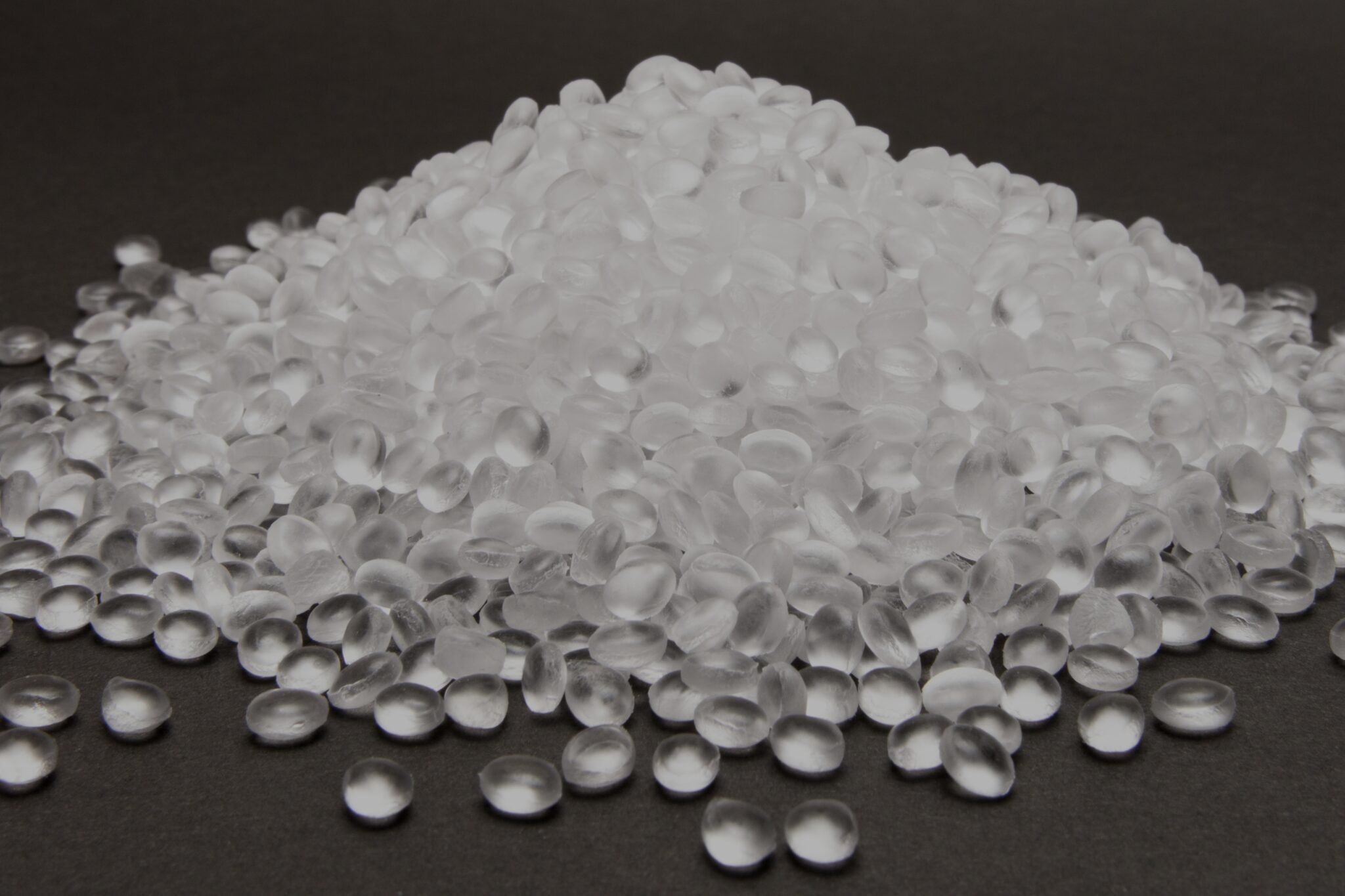

Originally published on fastradius.com on April 7, 2021
Polyethylene (PE) is a variable crystalline thermoplastic well known for its versatility. German chemist Hans von Pechmann discovered polyethylene by accident in 1898 when attempting to create a more stable version of diazomethane. Eric Fawcett and Reginald Gibson first synthesized polyethylene for industrial use in 1933, and large-scale production of low-density polyethylene began six years later. In the 1950s, catalysts were discovered that improved the polymerization aspect of polyethylene production, which jumpstarted high-density polyethylene production for the next twenty years and beyond.
Today, polyethylene is a staple of the manufacturing industry, and over 100 million tons of it are produced annually. Here’s everything you need to know about polyethylene, from how it’s made to its best-fit applications.
Polyethylene is made via the polymerization process. Hydrocarbon fuels are distilled into lighter groups called monomers, which are then brought into contact with a catalyst to start the polymerization process. Coordination polymerization, which involves metal chlorides and oxides, is most common, but polyethylene can also be produced using the radical polymerization process.
Polyethylene is available in many types, grades, and formulations with different properties. The most common types of polyethylene can be broken up into branched versions, linear versions, and cross-linked polyethylenes. Popular branched versions include low-density polyethylene (LDPE) and linear low-density polyethylene (LLDPE), while popular linear versions include high-density polyethylene (HDPE) and ultra-high-molecular-weight polyethylene (UHMWPE).
This semi-rigid, flexible thermoplastic has good weatherability, high-impact strength, and excellent electrical insulating properties. LDPE’s unique flow properties make it ideal for making shopping bags and plastic films. Even though low-density polyethylene is highly ductile, it has a very low tensile strength, as evidenced by its stretchiness. Like HDPE, this material has poor heat-resistance — in fact, it’s highly flammable — which limits its usage in high-temperature applications.
This type of polyethylene is flexible with good stress, crack, impact, and chemical resistance. It also has a high impact strength. LLDPE is structurally similar to LDPE and can even replace it in some applications, but LLDPE has a few key advantages. LLDPE’s properties can be altered by adjusting the polymer formula, and it’s less labor-intensive to produce than LDPE. This polyethylene is primarily used to make different kinds of film.
In contrast to LDPE and LLDPE, high-density polyethylene has a linear structure and little to no branching. It’s flexible but still rigid, weather-resistant, and holds up in the presence of low temperatures. HDPE has good UV resistance and is sometimes used in outdoor furniture. It also has a higher tensile strength than other forms of polyethylene. HDPE is frequently used in plastic milk cartons, garbage bins, cutting boards, and even laundry detergent bottles. However, it’s prone to stress cracking and has poor heat-resistance.
This is an extremely dense type of polyethylene — even denser than HDPE. This material can be spun into threads stronger than steel, and it’s frequently used to create bulletproof vests and other high-performance equipment. It has excellent mechanical properties and is mostly inert, making it suitable for use in the most corrosive environments.
High-density cross-linked polyethylene (XLPE) is a cross-linked polyethylene designed specifically for critical applications like chemical storage pipework systems and insulation for high-voltage electrical cables. It’s hydrolysis-resistant and potable water-approved with excellent abrasion resistance and electrical properties.
Generally, polyethylenes have excellent chemical and impact resistance, good electrical properties, and a low coefficient of friction. They’re also affordable, lightweight, and highly machinable. The mechanical properties of polyethylene will vary by type. For example, the mechanical specifications for LDPE are as follows:
Product teams should know that polyethylene is toxic in its liquid form. It can be very harmful if inhaled or absorbed into the skin. The other drawbacks of polyethylene are primarily environmental, as it’s not the most eco-friendly material on the market. For instance, LDPE and HDPE aren’t very biodegradable, and since they’re made from hydrocarbons and fossil fuels, they’re not sustainable.
Engineers and product teams from various industries choose polyethylene when they want an incredibly versatile and useful commodity plastic. It’s affordable, easy to machine, and compatible with tried and true manufacturing processes like injection molding and CNC machining.
Polyethylene also outpaces other plastics like polyurethane when it comes to applications. From films to containers to plastic toys, polyethylene can be found in most of the consumer goods you use today. Other popular applications include artificial joints in medical device manufacturing, automotive fuel tanks, all kinds of packaging, and pipes and fittings.
With all the different kinds of polyethylene plastic on the market, you can trust that there’s a type of PE out there that’s perfect for your part. Still, there are a lot of options to choose from, and material charts only go so far in helping you make your selection. How can you ensure you’re making the right decision? An experienced manufacturing partner can shed some much-needed light on the material selection process.
When you partner with SyBridge, you partner with a manufacturing team who will see you through the entire production process, starting with material selection. We help you determine which type of polyethylene plastic is best suited for your part and provide the expertise to take your part to the next level. Ready to get started? Contact us today.
Forget typical cycle times. We're pushing the boundaries of conformal cooling. While traditional approaches deliver…
Forget typical cycle times. We're pushing the boundaries of conformal cooling. While traditional approaches deliver…
From left to right: Brayden Janak (apprentice); Logan Vifaquain (CNC machining, Programming and CMM); Ron…
SyBridge Technologies is proud to announce we have been awarded the 2023 General Motors Supplier…
Today, designers and engineers are accustomed to working with digital tools in their day-to-day jobs.…
Optimizing Your Injection Molding Process for Cost-Effective Manufacturing Excellence In today’s competitive landscape, manufacturers are…